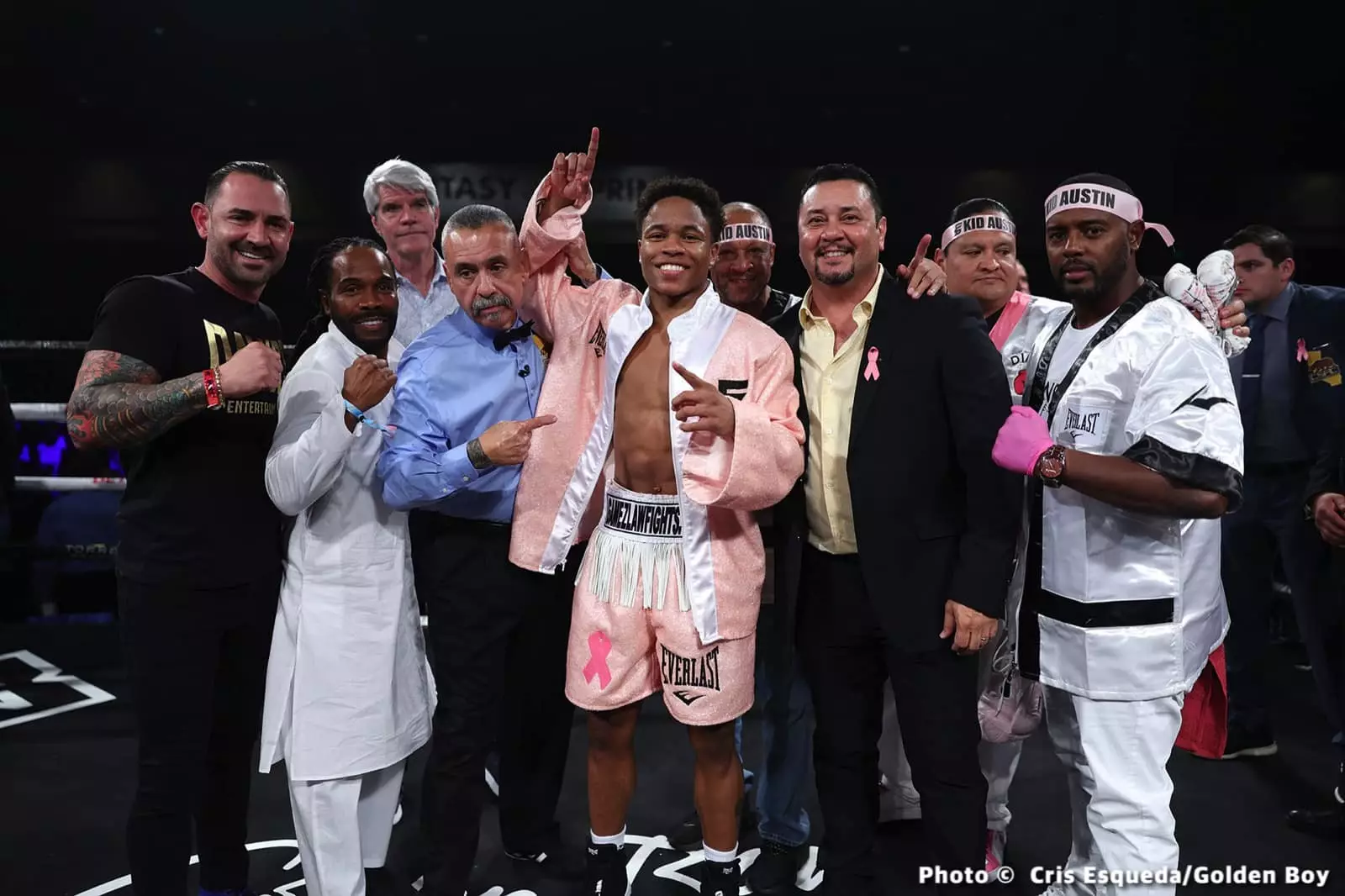In the world of professional boxing, the dynamics between promoters and fighters can be just as gripping as the matches themselves. Recently, Oscar De La Hoya, the iconic promoter behind Golden Boy Promotions, made headlines by sharply rejecting the idea of his young fighter, Floyd “Kid Austin” Schofield, being utilized as a challenger for WBC lightweight champion Shakur Stevenson on an upcoming high-profile card scheduled for February 22 in Riyadh. The underlying tensions, accusations, and competitive nature of this scenario reveal the broader complexities of the boxing industry, and the decisions made by promoters that can dramatically shape the career trajectories of their fighters.
De La Hoya’s vehement response came during his weekly social media segment, aptly titled „Clap Back Thursday,“ where he criticized Stevenson’s promoter Eddie Hearn for allegedly seeking to create a mismatch by proposing Schofield—a rookie in world championship levels at the age of 22—against the well-established Stevenson. Shakur Stevenson, with a professional record of 22 wins, 10 by knockout, and a decorated amateur background including a silver medal at the 2016 Olympics, represents a significant challenge for any contender, let alone one still relatively untested at the elite level such as Schofield, who boasts an impressive but inexperienced 18-0 record with 12 knockouts.
De La Hoya noted the lack of strategic foresight from Hearn in his approach, emphasizing that instead of targeting other seasoned champions like Frank Martin or Raymond Muratalla, Hearn was offering this high-stakes opportunity to Schofield, who lacks championship experience. This selection process, according to De La Hoya, reflects poorly not only on Hearn’s judgment but also on the potential damage it could inflict on Schofield’s budding career, which could be better leveraged in a more competitive matchup—possibly against Gervonta “Tank” Davis—for a higher financial reward.
From Schofield’s perspective, being offered a fight against a top-tier champion like Stevenson could have been viewed as a significant opportunity, despite the looming risks of a mismatch. Still, many boxing analysts and fans alike deemed this bout unwise for the young prospect, suggesting that entering the ring against Stevenson would represent an uphill battle fraught with danger, overshadowing Schofield’s ambitions of gradually ascending the ranks in the sport.
Moreover, Shakur Stevenson’s own reaction to De La Hoya’s refusal indicates the heightened emotions involved. Stevenson expressed frustration on social media, critiquing Schofield’s camp while questioning their ambition and strategic choices. This exchange also subtly hints at the complex interplay of egos and ambitions that characterize boxing rivalries. While some saw it as an indication of insecurity on Stevenson’s part—rumoring doubts about a potential rematch with Edwin De Los Santos—it highlights the competitive nature of professional boxing where mental battles often precede the physical ones.
Promoters like De La Hoya and Hearn play an influential role in shaping fighters’ careers, and their decisions can have lasting repercussions. Beyond just matchmaking, they are responsible for constructing favorable narratives that elevate their fighters’ profiles. De La Hoya’s protective stance over Schofield shows a promoter’s duty to safeguard a fighter’s potential against hasty challenges that could derail promising careers. His sharp criticism of Hearn’s approach signals an ongoing rivalry not just between fighters, but importantly at the level of promoters, where matchmaking strategies can ignite conflicts and controversies.
As these developments unfold, it sparks a broader conversation about the future of the lightweight division and the strategic paths that up-and-coming boxers should navigate. Amidst fierce competition, the safest and most lucrative routes to the championship often involve patience, calculated risk, and the backing of knowledgeable advisors and promoters attuned to the nuances of the sport.
In the end, as De La Hoya continues to defend his young talent, the boxing community watches closely, aware that within the sport, matches are not just a test of skill but a complex dance involving tactics, relationships, and, most importantly, the mutual respect—or lack thereof—between those who guide boxing’s brightest stars toward their destinies.


Napsat komentář